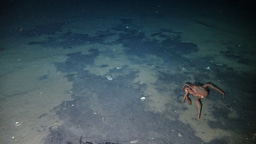The Mystery of the Ocean's Cradle: Mapping Polychaete Biodiversity in the Indo-Pacific Convergence Zone
Published in Earth & Environment and Ecology & Evolution

The Indo-Pacific Convergence Zone, nestled between the tropical Pacific and Indian Oceans, acts as a global epicenter for marine biodiversity, heat distribution, and energy convergence. Housing 76% of the world's coral species, the largest "warm pool," and intricate ocean currents, it stands as an ideal region for studying material and energy exchanges within the Earth's system and global changes. The resource and environmental effects in this area are complex, involving intense interactions across multiple spheres and oceans, shrouded in numerous mysteries. A research team, led by the Institute of Oceanology, Chinese Academy of Sciences, is seeking to investigate if the IPC is indeed a hotspot of marine biodiversity. If so, what are the drivers? As part of this undertaking, our study delves into these questions, focusing on the clade of Polychaetes.
Polychaetes, essential annelid members, reign supreme in these dynamic ecosystems, providing insights into evolutionary adaptation. With over 12,500 known species spanning 86 families, they shed light on life's diversification under environmental pressures. Amidst the IPC's intricate tapestry—where salinities shift, temperatures fluctuate, and habitats intertwine—studying polychaetes unveils mechanisms of marine biodiversity and resilience. Despite their significance, comprehending polychaete diversity across the IPC has been a formidable challenge, with critical data scattered throughout centuries of literature and databases.
We have curated a comprehensive dataset for Polychaetes in the IPC, encompassing information on species distribution, DNA barcodes, and functional traits. The species distribution data were derived from 39,310 occurrence records, with over 13% newly contributed from expeditions, museum collections, and 350 scientific papers. To achieve this, we initially surveyed the intertidal zone near the coast and deep-sea using the research vessel "Science," amassing over 1,000 collected samples. Subsequently, we amalgamated OBIS and GBIF entries, digitized decades-old specimen logs, cross-referenced hundreds of publications, and subjected every DNA sequence to rigorous quality control. Notably, the functional trait framework encompasses 13 key attributes across morphological, physiological, life history, and behavioral axes.
This database transcends a mere inventory; it serves as a dynamic platform for unraveling evolutionary processes in the ocean's enigmatic biodiversity cradle. Ongoing expansion through field surveys, genomic datasets, and unexplored taxa, with a focus on extreme environments, holds the promise of an evolving resource for marine ecological exploration.
Follow the Topic
-
Scientific Data

A peer-reviewed, open-access journal for descriptions of datasets, and research that advances the sharing and reuse of scientific data.
Related Collections
With Collections, you can get published faster and increase your visibility.
Data for crop management
Publishing Model: Open Access
Deadline: Jan 17, 2026
Computed Tomography (CT) Datasets
Publishing Model: Open Access
Deadline: Feb 21, 2026


Please sign in or register for FREE
If you are a registered user on Research Communities by Springer Nature, please sign in